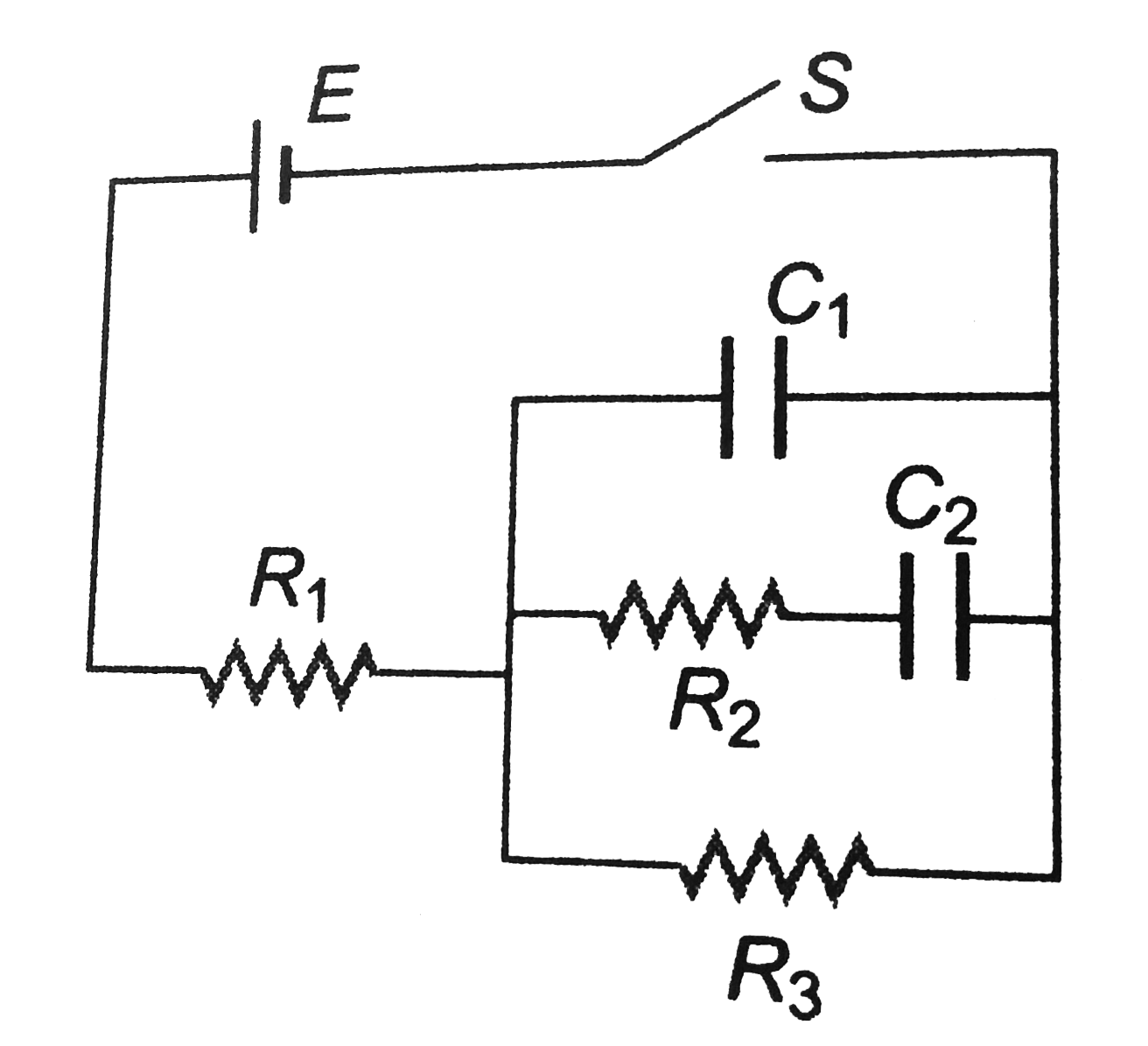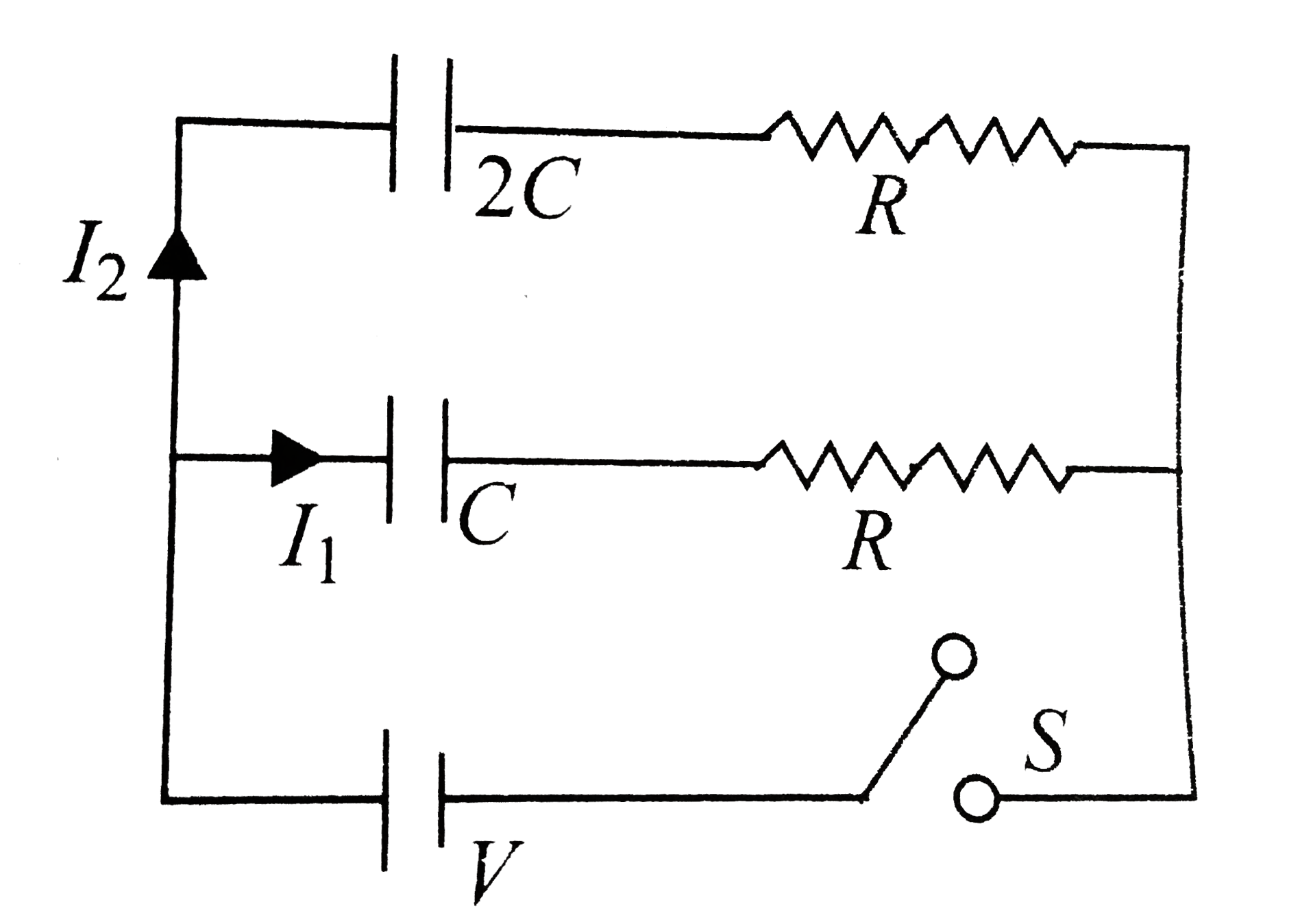In the circuit shown in fig switch S is closed at time t =0.

a. What is the current I0 leacing the battery at t=0, immediately after the switch is closed?
b. What is the current I "long time" later?
c. What charge has accmulated on the capacitor after this long time?
d. If, finally, swtich S is opened again, how long will it take after the switch is opened for the capactior to lose 80% of its charge?
Video Solution
Text Solution
At t =0, capacitor acts as short - circuit. There will not be any
current in the 40Ω resistance. Therefore,
I0=1020=0.5A
b. Capacitor acts as open cirucit, so
I=1060=106A
c. Voltage across capacitor is
V40=IR=16×40,Q=CV=0.50×16×40=103μC
d. q=q0(e−t/RC), capacitor will discharge through the 40Ω
resistor when S is open, i.e.,
20100q0=q0(et40×0.5×10−6) or 15=1te20×10−6
or t=20×10−6In(5)
|
Topper's Solved these Questions
- ELECTRIC CURRENT AND CIRCUITBook:CENGAGE PHYSICSChapter:ELECTRIC CURRENT AND CIRCUITExercise:Subjective
Explore 29 Videos
- ELECTRIC CURRENT AND CIRCUITBook:CENGAGE PHYSICSChapter:ELECTRIC CURRENT AND CIRCUITExercise:Single Correct
Explore 72 Videos
- ELECTRIC CURRENT AND CIRCUITBook:CENGAGE PHYSICSChapter:ELECTRIC CURRENT AND CIRCUITExercise:Exercise 5.1
Explore 28 Videos
- ELECTRIC CURRENT & CIRCUITSBook:CENGAGE PHYSICSChapter:ELECTRIC CURRENT & CIRCUITSExercise:Kirchhoff s law and simple circuits
Explore 15 Videos
- ELECTRIC FLUX AND GAUSS LAWBook:CENGAGE PHYSICSChapter:ELECTRIC FLUX AND GAUSS LAWExercise:MCQ s
Explore 38 Videos
Similar Questions
Knowledge Check
In the circuit diagram the current through the battery immediately after the switch S is closed is
 AzeroBER1CER1+R2DER1+R2R3R2+R3
AzeroBER1CER1+R2DER1+R2R3R2+R3In the circuit shown in figure switch S is closed at time t=0

Current I from the battery at time t is given byA3(1−e−2t)B3+e−2t)C3(1-e^(-t/9))D3−e−2tIn the circuit shwon in fig. switch S is closed at time t = 0. Let I1andI2 be the currents at any finite time t, then the ratio I1/I2
 Ais constantBincreases with timeCdecreases with timeDfirst increases, then decreases
Ais constantBincreases with timeCdecreases with timeDfirst increases, then decreases
In the circuit shown in fig, if the switch S is closed at t=0 , the capacitor charges with a time constant

View SolutionIn the circuit as shown in figure the switch is closed at t=0.

A long time after closing the switch
View SolutionIn the circuit shown in figure switch S is closed at time t=0

At what time current through 3Ω resistance and 1H inductor are equal?
View SolutionIn the circuit shown in figure switch S is closed at time t=0, which statement is true after one time constant of L-R circuit?

View SolutionFind heat produced in the capacitors after long time on closing the switch S

View Solution



